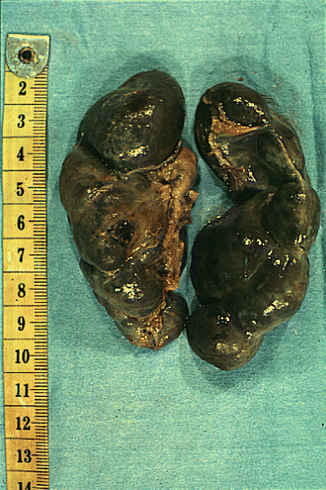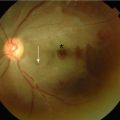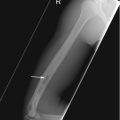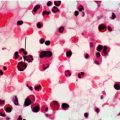and Paul Telfer2
(1)
Department of Haematology, Guy’s and St Thomas’ Hospital, London, UK
(2)
Department of Haematology, Royal London Hospital, London, UK
Introduction
The pathophysiology of splenic damage is described in Chap. 1. Loss of splenic function can be demonstrated as early as three months of age in HbSS. On routine examination in the out-patient clinic, the spleen often enlarges sufficiently to become palpable between 6 and 18 months of age, and thereafter becomes inpalpable, atrophic and non-functional by the age of 3–5 years (Fig. 11.1). Even if the spleen continues to be palpable, or appears to be of normal size on ultrasound scan, it is likely to be hypofunctional, and we recommend that the national guidelines for protection against infection for asplenic patients should be followed for all SCD patients (See Chap. 12).


Figure 11.1
Shrunken involuted spleen
Acute Splenic Sequestration
Acute splenic sequestration (ASS) is an important and potentially life-threatening complication seen most commonly in infants with HbSS. It is caused by the trapping (sequestering) of a large volume of red cells in the spleen, leading to splenic enlargement and rapidly progressive anemia (See Fig. 1.5).
Definition
The definition used in the Cooperative Study of Sickle Cell Disease is a fall in hemoglobin level of least 20 % associated with enlargement of the spleen by at least 2 cm from steady state. This emphasizes the need for information on steady state values, which should be documented at the child’s annual review visit.
Prevalence
The highest incidence rate is seen in HbSS children during the age range 3 months to 2 years. The majority of episodes occur before the age of 5 years. The overall rate in childhood is about 12 %. In HbSC, episodes are generally seen in children age 5 years and over, and the overall rate in childhood is about 6 %.
ASS is also seen in older children or in adults with milder genotypes, but generally without such severe sequelae.
Stay updated, free articles. Join our Telegram channel

Full access? Get Clinical Tree







